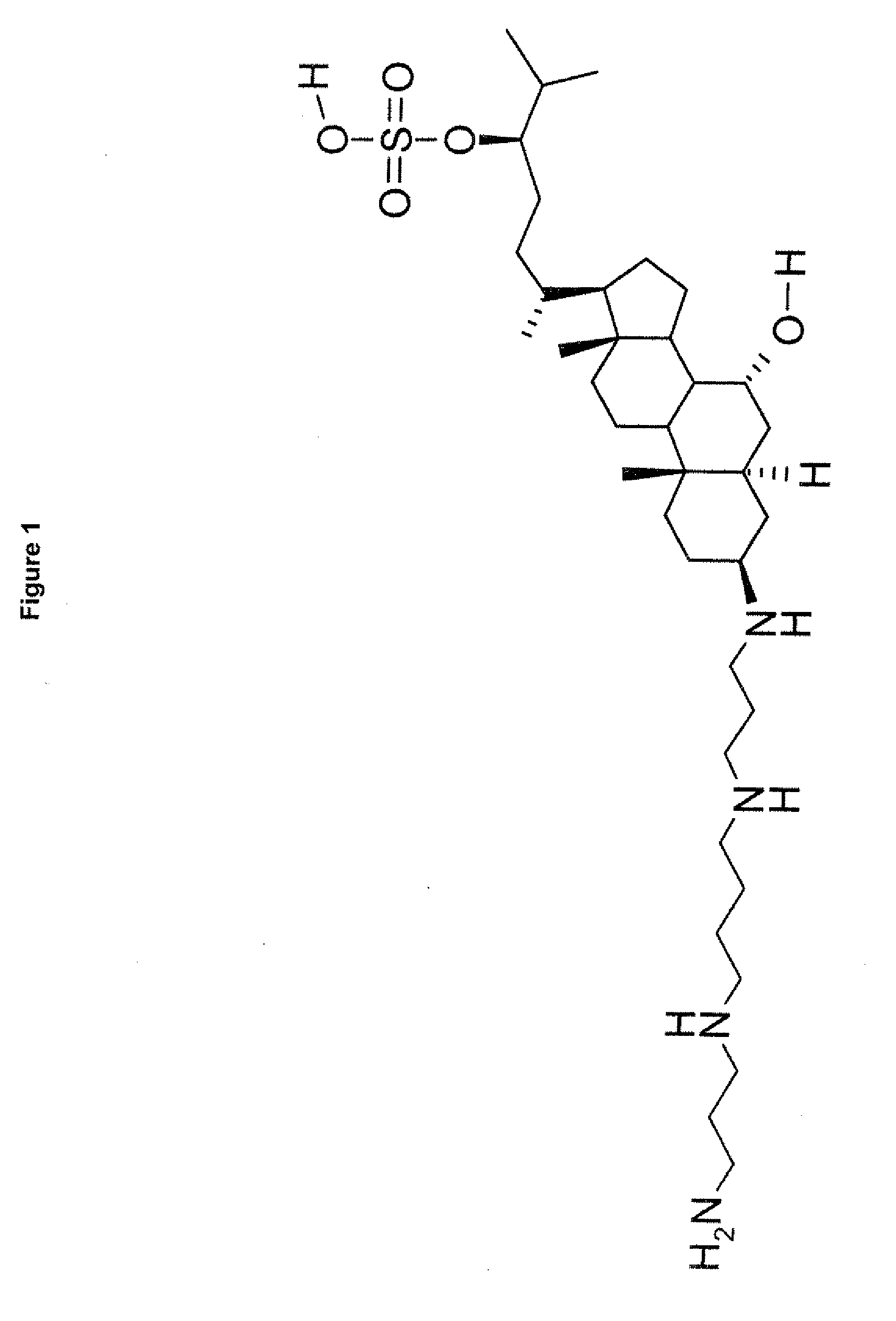Induction of weight loss and the selective inhibition of PTP1B
a technology of ptp1b and which is applied in the field of induction of weight loss in obese mammals, can solve the problems of increased risk in any surgery, increased risk of hemorrhage, and increased fat accumulation in the liver, and achieves the effect of increasing the activity of protein tyrosine phosphatas
- Summary
- Abstract
- Description
- Claims
- Application Information
AI Technical Summary
Benefits of technology
Problems solved by technology
Method used
Image
Examples
example 1
Induction of Weight Loss in Diet Induced Obese Mice
[0061] Mice and Study Design. At weaning, male AKR / J mice from Jackson Laboratories (Bar Harbor, Me., USA) were placed on a 10%, 45%, or 60% fat kcal diet (Research Diets, Inc., New Brunswick, N.J., USA). Mice were weighed weekly and treatment began after 13-14 weeks of access to the different fat diets. Immediately before the start of treatment, mice from all three diets were randomly subdivided further into three groups within the same fat composition diet with an even weight distribution. All mice were dosed (i.p. route) on a q7dx4 schedule, where the first dose of 1436 was 10 mg / kg and all remaining doses were 5 mg / kg. Saline-treated animals were administered 10 mL / kg. Pair-fed animals were dosed with saline (10 mL / kg) on the same q7dx4 schedule on a 1-day stagger from the other groups. As a measure of food consumption, remaining food was weighed daily. Pair-fed groups were allotted the exact amount of food consumed by 1436-tre...
example 2
Selective inhibition of Tyrosine Phosphatase Enzymes
[0069] Inhibition of PTP1B and TCPTP by compound 1436 was determined under contract by MDS Pharma in enzyme assays using human recombinant proteins expressed in E. Coli and tyrosine phosphopeptide (20 μg / mL) or DiFMUP (10 μM) as the substrates, respectively. In the PTP1B assay, phosphatase activity was quantitated through ELISA analysis of remaining tyrosine phosphopeptide after 30-minute incubations at room temperature with various concentrations of 1436 (0.05 μM to 500 EM). The IC50 value (1.14 μM) was determined using Data Analysis Toolbox™ (MDL Information Systems) by a non-linear, least squares regression analysis (See Table 1). The TCPTP assay required a 15-minute preincubation of enzyme and substrate at 37° C. followed by 60-minute incubations at 37° C. with various concentrations of 1436 (0.5 μM to 50 μM). TCPTP activity was assessed by spectrofluorimetric quantitation of DiFMU. Since no inhibition was demonstrated at any ...
example 3
Inhibition of Binding to the Dopamine (DAT) and Norepinephrine Transporters (NET)
[0070] Inhibition of binding to the Dopamine Transporter (DAT) and Norepinephrine Transporter (NET) by MSI-1436 was determined in radioligand binding assays using human recombinant proteins expressed in CHO-K1 or MDCK cells, respectively. Membrane preparations were incubated with [125I] RTI-55 (0.15 nM for DAT, 0.20 nM for NET) in the presence of 1436 (0.005 μM to 50 μM) for 3 hours at 4° C. IC50 values were determined as in PTP1B assays (See Table 2).
TABLE 2IC50 Values for 1436 Inhibition of Binding to DAT and NETDATNET˜IC50 (μM)1.743.24
PUM
 Login to View More
Login to View More Abstract
Description
Claims
Application Information
 Login to View More
Login to View More - R&D
- Intellectual Property
- Life Sciences
- Materials
- Tech Scout
- Unparalleled Data Quality
- Higher Quality Content
- 60% Fewer Hallucinations
Browse by: Latest US Patents, China's latest patents, Technical Efficacy Thesaurus, Application Domain, Technology Topic, Popular Technical Reports.
© 2025 PatSnap. All rights reserved.Legal|Privacy policy|Modern Slavery Act Transparency Statement|Sitemap|About US| Contact US: help@patsnap.com



